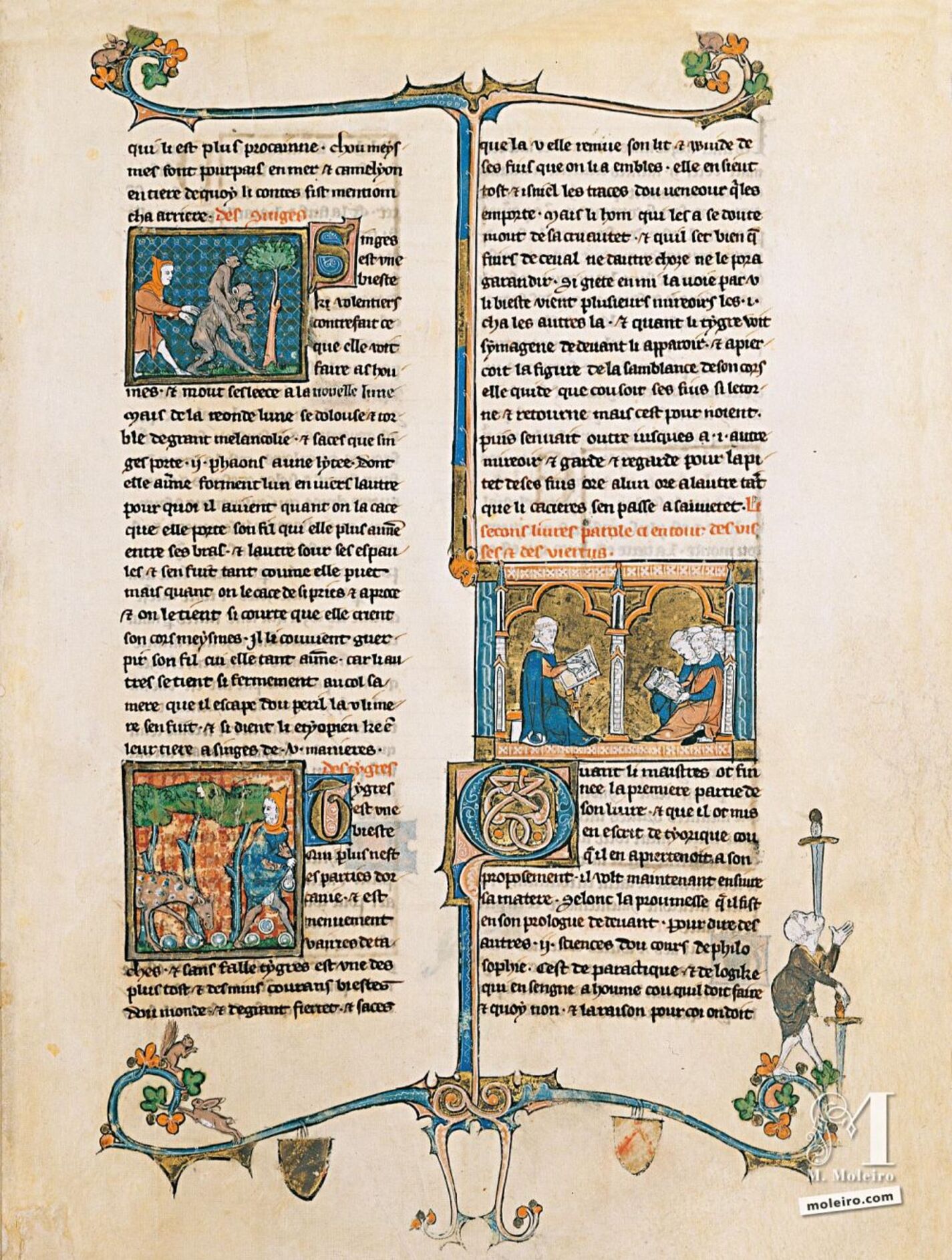Animals are a substantial part of the late classical encyclopedic writing, and along with plants and minerals, an essential part of the great cosmos, the overarching concept of the encyclopedia. Animals played an even greater role in ancient and medieval hunting and pharmalogical treatises, as well as fable collections, and are featured in collections of animal lore such as the Early Christian Phisiologus. The Judeo-Christian Bible, like virtually all narratives of creation and early time, also gives a significant role to animals. This ancient and Early Christian heritage is both the catalyst and source of lore for the animal chapters of Brunetto Latini’s Book of Treasures, which nevertheless is largely secular in content. The relatively large size of the animals section in the Book of Treasures undoubtedly reflects an increasing European interest in animals, both indigenous and exotic, that began in the 12 century and continued through the Middle Ages, producing growing numbers of royal and civic menageries, private ownership of exotic animals, and taste for animal subjects in art and literature. In the animal chapters in the Book of Treasures, the simplicity of form and content, and the accessibility of the vernacular text to a broad audience adhere closely to the encyclopedic tradition that sought to simplify the complex discourses of scholars for the general public, and in the Middle Ages for the clergy as well.
Willene B. Clark, Professor of Art History Emerita at Malboro College
